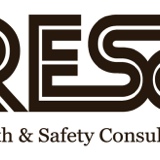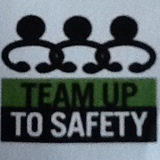Information
-
Project no.
-
Site
-
Contractor
-
Client
-
Conducted on
-
Prepared by
-
Location
-
Introduction
Safety management system
-
Proof of notification of construction to department of labour
-
Letter of good standing valid and current
-
Health & Safety policy signed by CEO
-
Safety plan approved by project manager
-
Recommendation
Legal appointments
-
All applicable legal appointments signed
-
16.1 resolution
-
16.2 legal appointment
-
6.1 Legal appointment
-
First aides appointment
-
Firefighter appointment
-
Safety rep appointment
-
Recommendation
Checklist & Registers
-
PPE register
-
Safety rep checklist
-
Extinguisher checklist
-
First aid box checklist
-
Welfare facilities checklist
-
Recommendation
Incident & accident management
-
Incident report form available
-
Annexure 1 form
-
Annexure 2 form
-
Recommendation
Emergency
-
Emergency procedure available
-
Emergency numbers
-
Strike emergency plan
-
Fire emergency plan
-
Snake bite emergency plan
-
Recommendation
Training
-
Inductions
-
First aided
-
Fire fighter
-
Safety rep
-
Recommendation
Sub-contractor management
-
37.2 agreement signed
-
Sub-contractor audit completed
-
Recommendation
Communication
-
Toolbox talks completed
-
Safety plan communicated to all employees
-
Construction regulations available
-
OSH act available
-
Recommendation
HIV/aids Awareness
-
HIV/AIDS plan available
-
Posters Available
-
Male Condoms available
-
Female Condoms available
-
HIV/AIDS Champion appointed
-
HIV/AIDS Video's Screened
Site conditions
-
Add media
-
PPE available for professional team
-
Adequate offices
-
Adequate and sufficient toilets
-
Ablutions serviced
-
Housekeeping of standard
-
Bins & skips available
-
Rubble removed off site on regular basis
-
Demarcated lay-down areas
-
Sheltered eating area with table & chairs
-
Drinking water
-
First aid box
-
Sufficient & adequate Fire Extinguisher
-
Suitable accommodation away from site
-
Recommendation
Public safety
-
Add media
-
Public directed away from all construction activities
-
Site securely fenced off
-
Construction sign board at entrance
-
Site visitors book available
-
Recommendations
Personal protective equipment
-
Add media
-
Hard hats
-
Overalls
-
Iron tip leather boots
-
Reflector vests
-
Task specific PPE been used
-
Recommendation
Heavy plant & vehicles
-
Add media
-
21. Construction vehicles and mobile plant
(1) A contractor shall ensure that all construction vehicles and mobile plants -
(a) are of an acceptable design and construction;
(b) are maintained in a good working order;
(c) are used in accordance with their design and the intention for which they where designed, having due regard to safety and health;
(d) are operated by workers who -
(i) have received appropriate training and been certified competent and been authorised to operate such machinery; and
(ii) are physically and psychologically fit to operate such construction vehicles and mobile plant by being in possession of a medical certificate of fitness;
(e) have safe and suitable means of access;
(f) are properly organised and controlled in any work situation by providing adequate signaling or other control arrangements to guard against the dangers relating to the movement of vehicles and plant, in order to ensure their continued safe operation;
(g) are prevented from falling into excavations, water or any other area lower than the working surface by installing adequate edge protection, which may include guardrails and crash barriers;
(h) where appropriate, are fitted with structures designed to protect the operator from falling material or from being crushed should the vehicle or mobile plant overturn;
(i) are equipped with an electrically operated acoustic signaling device and a reversing alarm; and
(j) are on a daily basis inspected prior to use, by a competent person who has been appointed in writing and the findings of such inspection is recorded in a register.
(2) A contractor shall furthermore ensure that
(a) no person rides or be required or permitted to ride on any construction vehicle or mobile plant otherwise than in a safe place provided thereon for that purpose;
(b) every construction site is organised in such a way that, as far as is reasonably practicable, pedestrians and vehicles can move safely and without risks to health;
(c) the traffic routes are suitable for the persons using them, sufficient in number, in suitable positions and of sufficient size;
(d) every traffic route is, where necessary indicated by suitable signs for reasons of health or safety;
(e) all construction vehicles and mobile plant left unattended at night, adjacent to a freeway in normal use or adjacent to construction areas where work is in progress, shall have appropriate lights or reflectors, or barricades equipped with appropriate lights or reflectors, in order to identify the location of the vehicles or plant;
(f) bulldozers, scrapers, loaders, and other similar mobile plant are, when being repaired or when not in use, fully lowered or blocked with controls in a neutral position, motors stopped and brakes set;
(g) whenever visibility conditions warrant additional lighting, all mobile plant are equipped with at least two headlights and two taillights when in operation;
(h) tools and material are secured in order to prevent movement when transported in the same compartment with employees;
(i) vehicles used to transport employees have seats firmly secured and adequate for the number of employees to be carried; and
(j) when workers are working on or adjacent to public roads, reflective indicators are provided and worn by the workers. -
Machinery in safe condition
-
Machinery & Vehicles licensed
-
Operator competent
-
Operator legally appointed
-
Operator licensed
-
Medical completed
-
Checklist completed
-
Risk assessment signed
-
Safe work procedure signed
-
Operators comments
-
Recommendation
Batch plant
-
18. Batch plants
(1) A contractor shall ensure that all batch plants are operated and supervised by a competent person who has been appointed in writing.
(2) A contractor shall ensure that the placement and erection of a batch plant complies with the requirements set out by the manufacturer and that such plant is erected as designed.
(3) A contractor shall ensure that all devices to start and stop a batch plant are provided and that these devices are -
(a) placed in an easily accessible position; and
(b) constructed in such a manner as to prevent accidental starting.
(4) The contractor shall ensure that the machinery and plant selected is suitable for the task and that all dangerous moving parts of a mixer are placed beyond the reach of persons by means of doors, covers or other similar means.
(5) No person shall be permitted to remove or modify any guard or safety equipment relating to a batch plant, unless authorized to do so by the appointed person as contemplated in subregulation (1).
(6) A contractor shall ensure that all persons authorized to operate the batch plant are fully-
(a) aware of all the dangers involved in the operation thereof; and
(b) conversant with the precautionary measures to be taken in the interest of health and safety.
(7) No person supervising or operating a batch plant shall authorize any other person to operate the plant, unless such person is competent to operate such machinery.
(8) A contractor shall ensure that all precautionary measures as stipulated for confined spaces in the General Safety Regulations promulgated by Government Notice No. R.1031 dated 30 May 1986, as amended, are adhered to when entering any silo.
(9) A contractor shall ensure that a record is kept of any repairs or maintenance to a batch plant and that it is made available, on site, to an inspector, client, client's agent or employee upon request.
(10) A contractor shall ensure that all lifting machines and lifting tackle used in the operation of a batch plant complies with the requirements of the Driven Machinery Regulations promulgated by Government Notice No. R.295 dated 26 February 1988, as amended.
(11) A contractor shall ensure that all precautionary measures are adhered to regarding the usage of electrical equipment in explosive atmospheres, when entering a silo, as contemplated in the Electrical Installation Regulations promulgated by Government Notice No. R.2271 dated 11 October 1995, as amended. -
Batch plant in safe working condition
-
Operator competent
-
Operator legally appointed
-
Checklist completed
-
Medicals completed
-
Risk assessment signed
-
Safe work procedure signed
-
Recommendation
Excavations
-
Add media
-
11. Excavation work
(1) A contractor shall ensure that all excavation work is carried out under the supervision of a competent person who has been appointed in writing.
(2) A contractor shall evaluate, as far as is reasonably practicable, the stability of the ground before excavation work begins.
(3) Every contractor who performs excavation work shall -
(a) take suitable and sufficient steps in order to prevent, as far as is reasonably practicable, any person from being buried or trapped by a fall or dislodgement of material in an excavation;
(b) not require or permit any person to work in an excavation which has not been adequately shored or braced: Provided that shoring and bracing may not be necessary where -
(i) the sides of the excavation are sloped to at least the maximum angle of repose measured relative to the horizontal plane; or
(ii) such an excavation is in stable material: Provided that -
(a) permission being given in writing by the appointed competent person contemplated in subregulation (1) upon evaluation by him or her of the site conditions; and
(b) where any uncertainty pertaining to the stability of the soil still exists, the decision from a professional engineer or a professional technologist competent in excavations shall be decisive and such a decision shall be noted in writing and signed by both the competent person contemplated in subregulation (1) and the professional engineer or technologist, as the case may be;
(c) take steps to ensure that the shoring or bracing contemplated in paragraph (b) is designed and constructed in such a manner rendering it strong enough to support the sides of the excavation in question;
(d) ensure that no load, material, plant or equipment is placed or moved near the edge of any excavation where it is likely to cause its collapse and thereby endangering the safety of, any person, unless precautions such as the provision of sufficient and suitable shoring or bracing are taken to prevent the sides from collapsing;
(e) ensure that where the stability of an adjoining building, structure or road is likely to be affected by the making of an excavation, the steps are taken that may be necessary to ensure the stability of such building, structure or road and the safety of persons;
(f) cause convenient and safe means of access to be provided to every excavation in which persons are required to work and such access shall not be further than 6m from the point where any worker within the excavation is working;
(g) ascertain as far as is reasonably practicable the location and nature of electricity, water, gas or other similar services which may in any way be affected by the work to be performed, and shall before the commencement of excavation work that may affect any such service, take the steps that may be necessary to render the circumstances safe for all persons involved;
(h) cause every excavation, including all bracing and shoring, to be inspected -
(i) daily, prior to each shift; -
(ii) after every blasting operation;
(iii) after an unexpected fall of ground;
(iv) after substantial damage to supports; and
(v) after rain,
by the competent person contemplated in subregulation (1), in order to pronounce the safety of the excavation to ensure the safety of persons, and those results are to be recorded in a register kept on site and made available to an inspector, client, client's agent, contractor or employee upon request;
(i) cause every excavation which is accessible to the public or which is adjacent to public roads or thoroughfares, or whereby the safety of persons may be endangered, to be -
(i) adequately protected by a barrier or fence of at least one metre in height and as close to the excavation as is practicable; and
(ii) provided with warning illuminants or any other clearly visible boundary indicators at night or when visibility is poor;
(j) ensure that all precautionary measures as stipulated for confined spaces as determined in the General Safety Regulations promulgated by Government Notice No. R.1031 of 30 May 1986, as amended, are complied with when entering any excavation;
(k) ensure that, where the excavation work involves the use of explosives, a method statement is developed in accordance with the applicable explosives legislation, by an appointed person who is competent in the use of explosives for excavation work and that the procedures therein are followed; and
(l) cause warning signs to be positioned next to an excavation within which persons are working or carrying out inspections or tests. -
Excavations safe
-
Excavation supervisor legally appointed
-
Excavation checklist completed
-
Excavation Risk assessment communicated to all employees
-
Safe work procedures communicated
-
Briefed supervisor on hazards and regulations
-
Excavation supervisor
-
Supervisor comments
-
Recommendation
Scaffolding
-
Add media
-
14. Scaffolding
(1) Every contractor using access scaffolding, shall ensure that such scaffolding, when used, complies with the safety standards incorporated for this purpose into these Regulations under section 44 of the Act.
(2) A contractor shall ensure that all scaffolding work operations are carried out under the supervision of a competent person who has been appointed in writing and that all scaffold erectors, team leaders and inspectors are competent to carry out their work.
Scaffolding must adhere to the listed minimum without deviating from the above regulation
1. Handrails & guard rails to be installed
2. Bracing
3. Toe boards fitted
4. Fully planked
5. Sole plates
6. Ladders
7. Scaffold tags ( safe & unsafe) -
Scaffolding safe
-
Scaffolding inspector appointed & competent
-
Scaffold team leader appointed and competent
-
Scaffold erectors competent
-
Medicals completed
-
Scaffold register & checklist completed
-
Scaffolding risk assessment communicated to all employees
-
Scaffold safe work procedures communicated
-
Scaffolding team briefed
-
Scaffolding inspector
-
Scaffolding team leader
-
Erector
-
Erector
-
Erector
-
Erector
-
Scaffolding team comments
-
Recommendation
Work at heights
-
Add media
-
8. Fall protection
(1) A contractor shall cause -
(a) the designation of a competent person, responsible for the preparation of a fall protection plan;
(b) the fall protection plan contemplated in (a) to be implemented, amended where and when necessary and maintained as required;
(c) steps to be taken in order to ensure the continued adherence to the fall protection plan.
(2) The fall protection plan contemplated in subregulation (1), shall include -
(a) a risk assessment of all work carried out from an elevated position which shall include the procedures and methods used to address all the risks identified per location;
(b) the processes for evaluation of the employees' physical and psychological fitness necessary to work at elevated positions and the records thereof;
(c) the programme for the training of employees working from elevated positions and records thereof; and
(d) the procedure addressing the inspection, testing and maintenance of all fall protection equipment.
(3) A contractor shall ensure that the construction supervisor appointed in terms of regulation 6(1), is in possession of the most recently updated version of the fall protection plan.
(4) Notwithstanding the provisions of subregulations (1) and (2), the contractor shall ensure that -
(a) all unprotected openings in floors, edges, slabs, hatchways and stairways are adequately guarded, fenced or barricaded or that similar means are used to safeguard any person from falling through such openings;
(b) no person works in an elevated position, unless such work is performed safely as if working from a scaffold or ladder;
(c) notices are conspicuously placed at all openings where the possibility exists that a person might fall through such openings;
(d) fall prevention and fall arrest equipment is -
(i) suitable and of sufficient strength for the purpose or purposes for which it is being used having regard to the work being carried out and the load, including any person, it is intended to bear; and
(ii) securely attached to a structure or plant and the structure or plant and the means of attachment thereto is suitable and of sufficient strength and stability for the purpose of safely supporting the equipment and any person who is liable to fall;
(e) fall arrest equipment shall only be used where it is not reasonably practicable to use fall prevention equipment; and
(f) suitable and sufficient steps shall be taken to ensure, as far as is reasonably practicable, that in the event of a fall by any person, the fall arrest equipment or the surrounding environment does not cause injury to the person.
(5) Where roof work is being performed on a construction site, the contractor shall ensure that in addition to the requirements set out in subregulations (2) and (4), it is furthermore indicated in the fall protection plan -
(a) that the roof work has been properly planned;
(b) that the roof erectors are competent to carry out the work;
(c) that no employees are permitted to work on roofs during inclement weather conditions or if weather conditions are a hazard to the health and safety of the employees;
(d) that prominent warning notices are to be placed where all covers to openings are not of sufficient strength to withstand any imposed loads and where fragile material exists;
(e) that the areas mentioned in paragraph (d) are to be barricaded off to prevent persons from entering;
(f) that suitable and sufficient platforms, coverings or other similar means of support have been provided to be used in such a way that the weight of any person passing across or working on or from fragile material is supported; and
(g) that there is suitable and sufficient guard-rails or barriers and toe-boards or other similar means of protection to prevent, so far as is reasonably practicable, the fall of any person, material or equipment. -
Work at heights safe to continue
-
Employees medically fit
-
Lifelines installed
-
Safety harness been used
-
Safe access and egress
-
Fall protection plan communicated
-
Working at heights risk assessment communicated
-
Workers at height been briefed by consultant
-
Recommendation
Storage of flammable liquids
-
Add media
-
Bund wall erected
-
Fire extinguisher in place
-
Symbolic signage
-
Recommendation
Demolition
-
Add media
-
Appointed personnel in place
-
Risk assessments communicated
-
Area cornered off
-
Recommendation
Formwork
-
Add media
-
Legal appointments in place
-
Risk assessments communicated
-
Safe work practices
-
Recommendation
Conclude
-
Site compliant
-
Recommendations
-
Conclusion
-
Site representative
-
Site representative
-
Auditor













